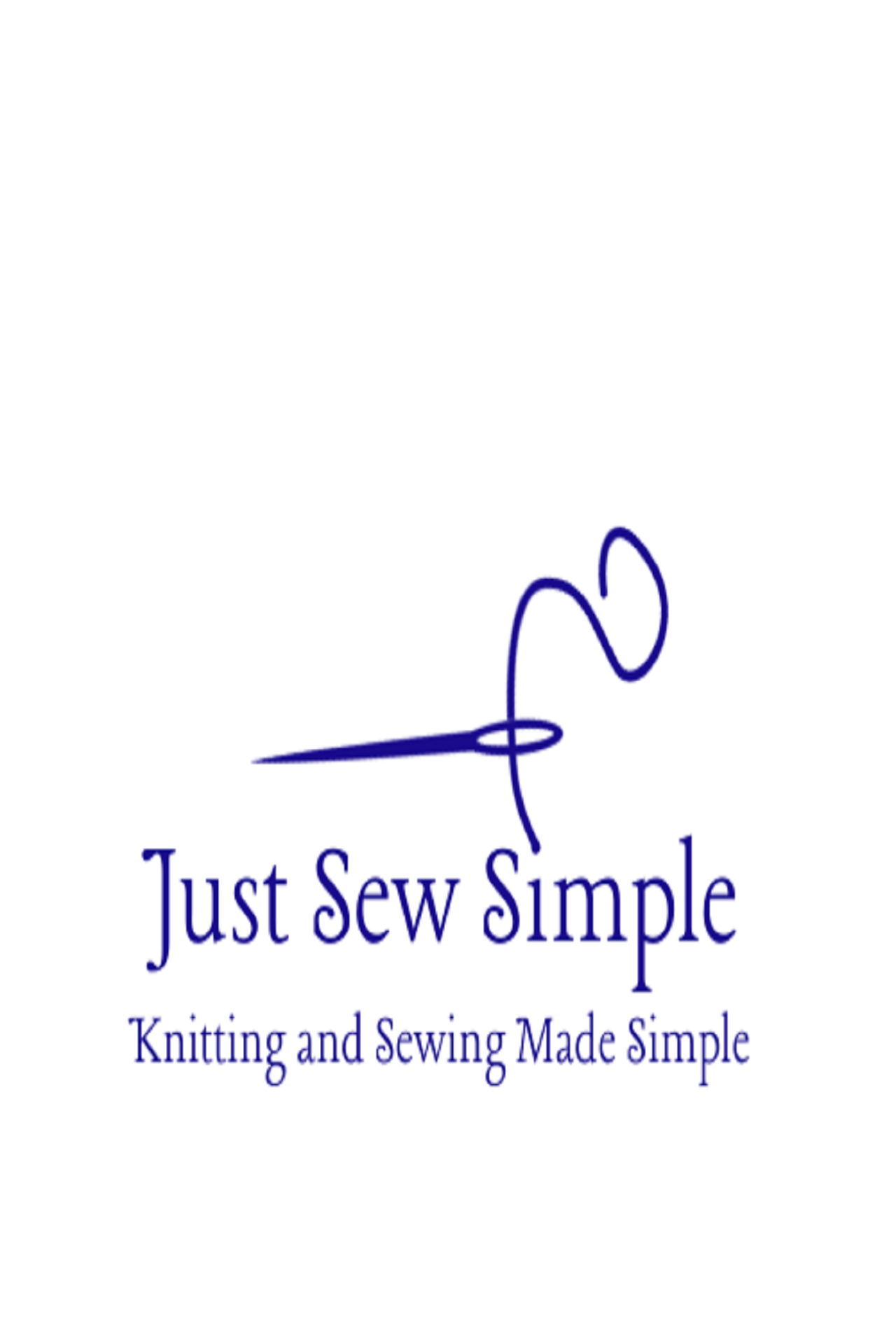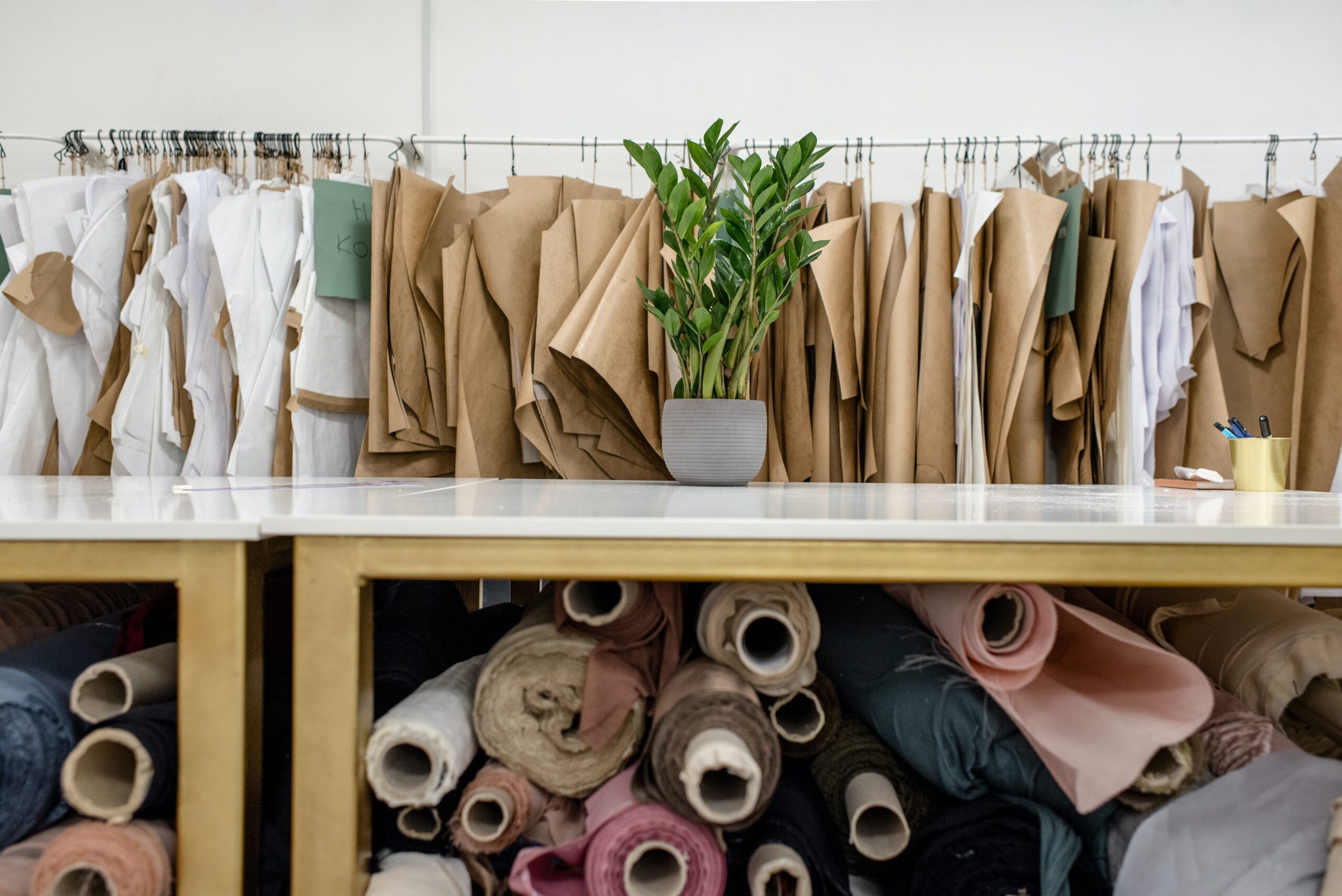A quick visit to the fabric store will tell you that there are countless fabric types. Choosing a suitable fabric can make all the difference in the final product when creating clothes. I’d argue that selecting the appropriate material is perhaps the most critical step in your project.
But with so many fabric types available, it can be overwhelming for beginners to know which fabric to buy! This is because so many different fabric materials are available, each with unique properties and recommended uses.
Choosing the wrong fabric is one of the most common sewing mistakes for beginners. How can you know the right choice for your project?
What is Fabric?
We all know what fabric is, but can we actually define it if needed?
Fabric is a flexible material made by weaving or knitting fibers together. It’s used to produce clothing, upholstery, bedding, and other textile products.
Fabrics can be made from a variety of materials, including cotton, silk, wool, polyester, and nylon. The texture and properties of a fabric depend on the type of fiber used, as well as the way it is woven or knitted. Materials can also be treated with chemicals or dyes to achieve specific properties or colors.
Difference Between Woven and Knit Fabric
Making fabric involves different methods of construction to create a textile. It can be either woven or knitted.
Woven fabrics interlace two sets of threads or fibers at right angles to create a stable and strong material. They are the most common fabric types used in clothing and come in many different varieties.
These fabrics are generally stiffer and have less stretch than knit fabrics. Some of the most popular woven fabrics include plain weave, twill weave, and satin weave. Examples of woven fabric types include cotton, linen, and twill.
Cotton is one of the most common types of woven fabric and is a popular choice for clothing due to its softness and versatility.
On the other hand, knit fabrics are made by interlocking loops of yarn to create a stretchy and flexible material. As a result, they are more springy and supple than woven fabrics, making them ideal for garments that require flexibility and movement.
Knit fabrics come in various weights, from lightweight materials suitable for t-shirts to heavier double-knit fabrics that can be used for more substantial garments, like leggings. One of the most popular knit fabrics is jersey knit, a soft and versatile fabric commonly used in t-shirts and other casual wear.
Natural vs. Synthetic Fabric
Fabrics can be made from either natural or synthetic fibers. Natural fibers are derived from plants or animals and include cotton, wool, and silk. These fabrics are highly breathable, comfortable to wear, and often considered luxurious. However, they also tend to be more expensive.
Some examples of natural fabrics include linen, silk, and wool. Linen fabrics are known for their durability and ability to keep you cool, while silk fabrics are renowned for their softness and sheen. Wool fabrics are made from the fibers of merino sheep and are excellent for creating warm and cozy garments.
Synthetic fibers, such as polyester and nylon, are made from chemical compounds and are generally less expensive than natural fibers.
These fabrics are often used to create lightweight garments that are easy to care for and wrinkle-resistant. Polyester fabrics, for example, are commonly used in evening wear and other formal attire due to their ability to hold their shape and create a luxurious fabric-like finish. They are also often used in athletic wear and outdoor gear because of their moisture-wicking and water-resistant properties.
Blended Fabrics
Blended fabrics are made from a combination of natural or synthetic fibers, resulting in a material that combines the best qualities of both. As a result, these can be lightweight, versatile, and durable, making them ideal for a wide range of sewing projects.
Some popular blended fabrics include cotton-polyester blends and wool-cashmere blends.
Specialty Fabrics
Specialty fabrics are made for specific purposes, such as upholstery or decorative needs.
Some examples of specialty fabric types include faux fur, pile fabrics, and lawn fabrics. These fabrics are often denser and heavier than other fabric types and require different techniques when working with them.
Fabric Types
Every fabric has its own unique properties and uses. Some are super thick and stiff, making them ideal for outerwear, for example. Other fabric types drape beautifully and are quite delicate; these would be ideal for gowns and other eveningwear.
Knowing the differences between the most common fabric types is helpful when starting out sewing. Remember, some are much easier to work with than others.
Cotton Fabric
Cotton is a soft, breathable fabric that’s incredibly versatile and easy to work with. As a result, it’s excellent for a wide range of projects. Cotton comes in various weights and textures, from lightweight lawn to heavy denim, and includes flannel, muslin, and jersey.
Cotton is easy to work with and an excellent choice for beginners.
Linen Fabric
Linen is a natural fabric that’s lightweight and breathable, made from the flax plant. It is durable and has a unique texture that makes it perfect for warm weather clothing and home decor.
Many garments and household items are made from linen. Though it may sometimes feel a bit scratchy and rough at first, it gets softer with age and can last much longer than cotton.
Wool Fabric
Wool is a natural fiber derived from the fleece of sheep or other animals. It is warm, durable, and has natural moisture-wicking properties, making it ideal for winter clothing.
It comes in different weights and textures, including tweed and merino wool. Some wool is very heavy and abrasive, while others are light and cloud-soft.
Polyester Fabric
Polyester is a synthetic fabric that’s lightweight, durable, and resistant to wrinkles and shrinking. It is often used in athletic wear and outdoor gear.
Polyester and nylon are two of the most commonly found fabrics. Part of their popularity comes from their affordability and how easy they are to work with. They come in a variety of weights and textures.
Silk Fabric
Silk is a luxurious fabric made from the fibers of the silkworm. It’s famously soft and smooth, with a natural sheen that makes it perfect for formal wear.
This is one of the more expensive fabrics on the market. Different types of silk include charmeuse, taffeta, habotai, satin, organza, and chiffon.
Types of Weaves
There are three main types of weaves in fabric: plain, twill, and satin. “Weave” refers to how the threads are interwoven to construct the textile.
Weave can influence how easily the fabric tears, whether it will shrink, and how the garment drapes.
Plain Weave Fabric
Plain weave fabric is the most basic type of weave, created by interlacing two sets of yarn at right angles. It is typically lightweight and has a smooth texture.
Twill Fabric
Twill fabric is created by weaving yarns over and under one another in a diagonal pattern. It’s durable and has a distinctive texture, often used in denim and other heavy-duty fabrics.
Satin Weave Fabric
Satin weave fabric is created by weaving yarns over and under one another in a way that creates a smooth and shiny surface. It’s very delicate and often used in formal wear and lingerie.
Tips for Choosing the Right Fabric Types
You’ll need to consider several factors when choosing fabric for a sewing project. Drape, weight, and stretch are all essential when selecting a material. It’s also important to consider the intended use of the garment and the care instructions for the fabric.
You’ll probably find it helpful to experiment with different fabric types to find the one that works best for your particular project. I know it can be frustrating to take that extra time when all you want to do is jump in and start sewing, but believe me, this is worth it!
Choosing the right fabric for your project is essential for ensuring the success of your sewing project. Now that you have an understanding of the different types of material available, it’s time to go fabric shopping!
Fabric Shopping Pointers
- Think about the function of the garment. Will it be worn for a specific occasion or activity? This will help you choose the right fabric weight and texture. You can also consider the fabric’s care instructions and whether it is pre-shrunk or needs to be pre-washed before use.
- Feel the fabric to make sure it’s the texture you want. Some fabrics are soft and lightweight, while others are more rigid and heavy. Consider the design of the garment. For example, a lightweight fabric may not work well for a structured garment.
- Consider the color and pattern of the fabric. Will it work with the design of the garment you plan to make?
- Think about the care instructions for the fabric. Some fabrics require special care, such as dry cleaning or delicate washing. The label on the fabric bolt can give you all this information.
- Buy a little bit extra fabric than you think you’ll need. This gives you some wiggle room in case of mistakes or changes in your design.

